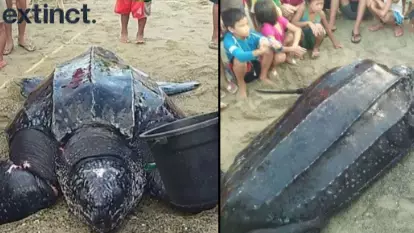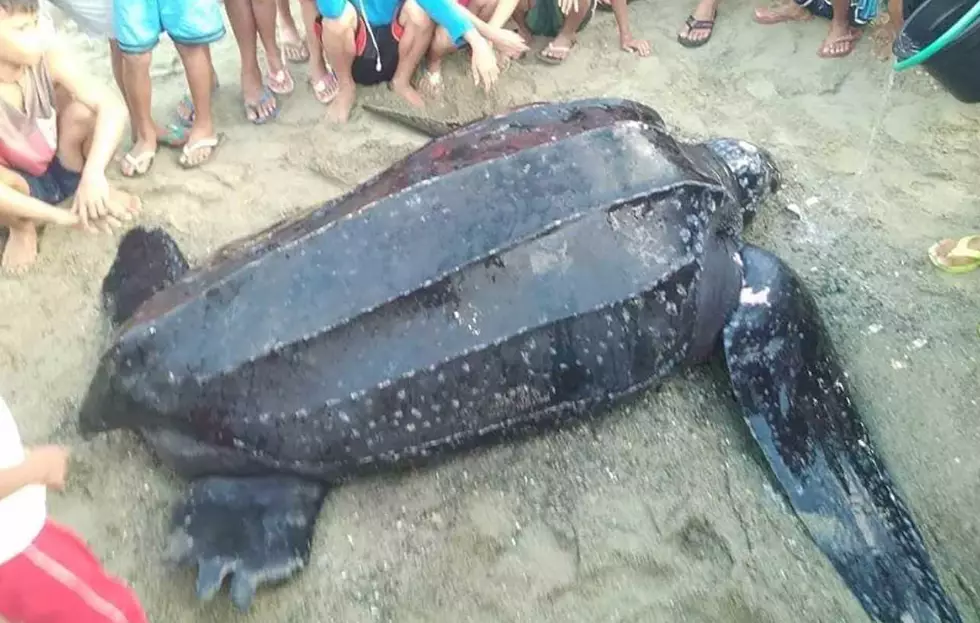
A wounded leatherback sea turtle has received medical treatment after a fisherman accidentally caught it in his net and brought it to shore.
The 370 kilogram (58.2 stone) behemoth was brought ashore on a beach at the village of Duran in the Camarines Sur province on Luzon, the largest island in the Philippines.
Fisherman, Albert Pasamba, took the decision after noticing the four-foot-long female trapped in his net was bloodied, calling local environment officials once he made it to land.
Advert
Local environmental management specialist, Norielet Reciproco, confirmed the turtle had fin and neck wounds, which needed treatment before it could be returned to the water. However, he said the fact the turtle was raising its head with each breath indicated its overall health was good.

But despite prompting a great deal of excitement in the village, particularly among children, Mr Reciproco insisted the turtle must be returned to the sea.
He said: "These turtles should be released so they can multiply because it is their nature."
Advert
Despite having few natural predators once fully mature, leatherback sea turtles are still at risk of becoming extinct and are critically endangered in certain Pacific regions, according to the World Wildlife Fund. This is largely due to egg harvesting in countries such as Thailand and Malaysia, which has led to a near-total collapse of nesting populations.
In this particular instance, human interference inadvertently and ironically helped the wounded animal. However, another leatherback sea turtle found on the beach in Duran earlier this year wasn't so fortunate; it was found to have died as a result of swallowing plastic.
Bureau of Fishery and Aquatic Resources spokesperson, Nonie Enolva, said the seas off Balatan were a 'hotspot' for turtles because they were so rich in food, such as jellyfish.
Advert
The leatherback sea turtle is the largest of all living turtles and is also one of the most migratory, crossing both the Atlantic and Pacific Ocean. As the frustrating video below evidences, they are not such adept travellers on land.
This is part of the reason why they have become so close to extinction, because they are such easy pickings for hunters. The creatures come to land in the first place to lay their eggs, which are also pillaged by egg harvesters.
As such, it is human intervention in the leatherback's reproduction process which is causing such harm to their population.
That said, there is still hope for the species, thanks to conservation groups that are defending the turtles and their eggs. Also, by promoting the creatures as tourist attractions, conservationists are aiming to make their survival integral to economic prosperity in the coastal communities that are home to the turtles.
Featured Image Credit: AsiaWireTopics: Extinct, World News, Animals